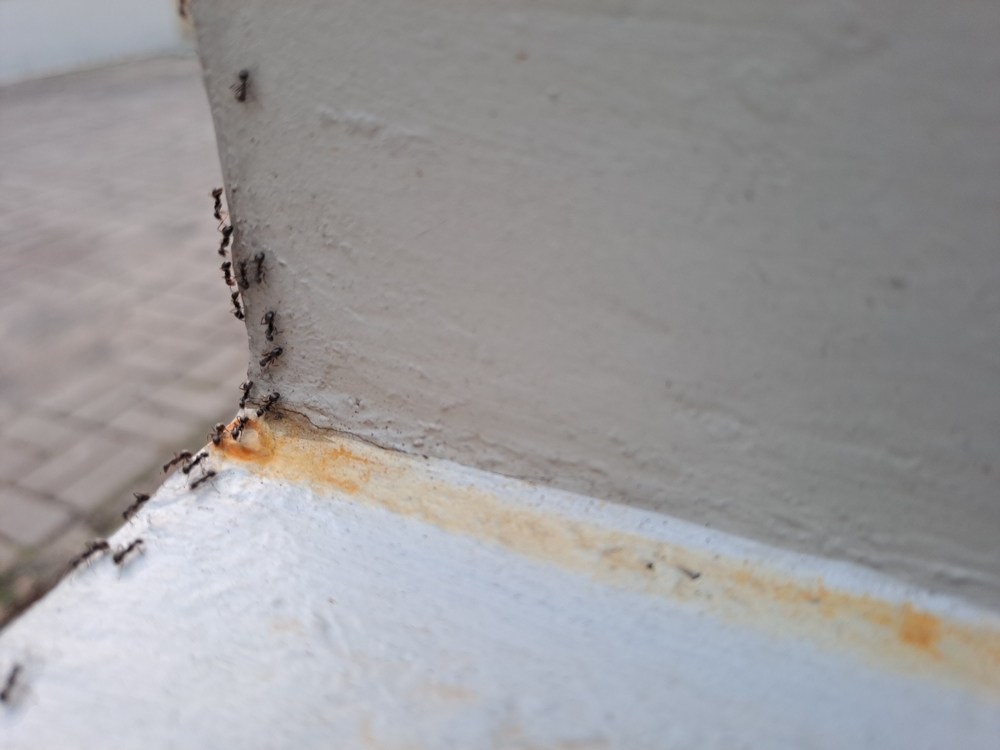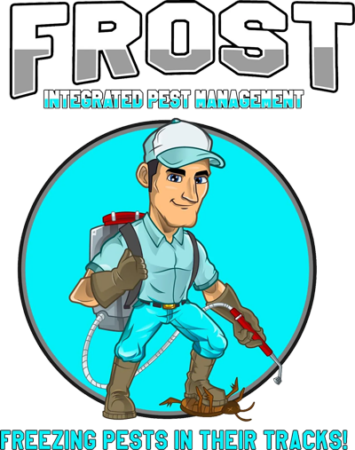The Hidden Dangers of Carpenter Ants in Portland Homes

Carpenter ants in Portland are one of the most common household pests, and they pose a unique challenge to homeowners. Unlike termites, carpenter ants do not consume wood for sustenance, but they carve out extensive tunnels and galleries inside wood structures to build their nests. This destructive behavior can silently compromise the integrity of beams, joists, and siding over time. Portland’s damp, rainy climate creates the perfect environment for these insects to thrive, as moist or decaying wood is easier for them to excavate.
Carpenter ants are typically larger than many other ant species, often measuring up to half an inch in length. They are usually black, although some may show reddish or brown hues. Their presence is not just a minor annoyance; it’s a warning sign of deeper issues within the structure of your home. These ants are drawn to wood softened by moisture, which means their presence often points to underlying water damage. This makes a carpenter ant infestation both a pest problem and a maintenance issue for homeowners.
The Pacific Northwest, and Portland in particular, sees a high rate of carpenter ant activity due to its weather patterns and abundance of trees. Homes surrounded by lush landscaping or older wooden structures are at greater risk. Homeowners who notice increased ant activity during warmer months should not dismiss it, as carpenter ants often forage long distances from their nests, meaning the source of the problem could be much closer than it appears.
Signs of Carpenter Ants in Your Home
Recognizing the signs of carpenter ants is critical to preventing extensive damage. Unlike termites, carpenter ants leave behind clear indicators of their presence if you know what to look for. One of the most telling signs is the appearance of sawdust-like material called frass. This is the debris created as ants excavate tunnels inside wood. You might find frass collecting beneath baseboards, window sills, or other wooden surfaces.
Another common sign of carpenter ants in Portland homes is the sound of rustling or faint movement inside walls or woodwork, particularly at night when the colony is most active. These sounds are subtle, but in quiet environments they can be detected. Homeowners may also notice discarded wings from swarmers, the reproductive ants that emerge in spring or summer to establish new colonies. Finding wings indoors near windows or doors often signals that a nest may already be present within the structure.
Visible ants are another sign, but they should not be underestimated. Carpenter ants are nocturnal foragers and often travel significant distances from their nests in search of food. If you regularly see large black ants in your kitchen, pantry, or bathroom, it may not be a coincidence. While you might assume they’re coming from outside, frequent sightings often indicate that a nest is already inside the home. Additionally, soft or hollow-sounding wood can be a red flag, especially in areas prone to moisture such as bathrooms, kitchens, basements, or near leaky roofs.
Prompt recognition of these signs of carpenter ants can help you avoid extensive structural damage. Many homeowners misinterpret the problem as a minor nuisance, but carpenter ants are often a symptom of hidden moisture problems or decaying wood that need immediate attention.
The Risks of a Carpenter Ant Infestation
A carpenter ant infestation can cause far-reaching damage that extends beyond structural concerns. The most immediate risk is the weakening of wooden components in your home. Beams, joists, decks, and siding can become compromised, leading to costly repairs and even safety hazards if left unaddressed. Because the ants tunnel within the wood, the damage is often hidden until it reaches an advanced stage. By the time a homeowner realizes the extent of the destruction, repairs can run into thousands of dollars.
Carpenter ants also reproduce rapidly, and colonies can grow to house thousands of individuals, including multiple queens. A single home may host several satellite nests, making it difficult to fully eliminate the problem without professional pest control in Portland, OR. These satellite nests allow the ants to spread throughout the property, colonizing multiple areas and accelerating the damage.
Beyond the physical structure of the home, carpenter ants indirectly impact your indoor environment. Moisture problems that attract ants can also foster mold growth, creating air quality issues that may affect your health. An infestation can also lower property value, as potential buyers are often wary of homes with a history of pest-related damage. Insurance companies rarely cover the cost of repairing carpenter ant destruction, considering it a maintenance issue rather than a sudden event. This leaves homeowners fully responsible for addressing the problem.
Unlike some pests that cause temporary discomfort, carpenter ants are a persistent and escalating threat. Their ability to exploit moist wood means that even minor leaks or condensation can set the stage for an infestation. The hidden nature of their damage makes them particularly dangerous, as the true cost of neglect is often only revealed when it is too late.
Pest Control in Portland, OR: Why Professional Help Matters
When it comes to pest control in Portland, OR, carpenter ants present a unique challenge that requires professional expertise. DIY methods, such as sprays and bait traps, may temporarily reduce visible ant activity, but they rarely address the core issue: the nest. Because carpenter ants create deep galleries inside wood and can establish satellite nests, surface treatments are largely ineffective. Unless the queen is eliminated, the colony will continue to thrive.
Professional pest control providers in Portland are trained to identify the full extent of a carpenter ant infestation. They use specialized tools to locate nests, often hidden in walls, crawl spaces, attics, or even outdoors in tree stumps. Once located, targeted treatments are applied to eliminate the colony at its source. Pest control technicians also help identify and address the conditions that attract carpenter ants, such as leaks, poor ventilation, or decaying wood.
Local knowledge is particularly valuable in Portland, where the damp climate contributes to frequent infestations. Pest control experts understand the seasonal patterns of carpenter ants in the region and can implement preventative measures tailored to the local environment. Professional services not only remove the existing problem but also help prevent future infestations by sealing entry points and offering guidance on home maintenance.
For homeowners, investing in professional pest control is a matter of long-term savings. While the initial cost may seem significant, it pales in comparison to the expense of repairing structural damage caused by untreated infestations. With regular inspections and treatments, Portland residents can protect their homes from both carpenter ants and the moisture issues that attract them.
Preventing Future Infestations
While professional pest control is essential for eliminating active colonies, prevention is the best strategy for keeping carpenter ants at bay. Homeowners can take steps to reduce the risk of infestations by focusing on moisture control and property maintenance. Regularly inspecting your home for leaks, particularly in roofs, gutters, and plumbing, is crucial. Fixing these issues promptly not only discourages carpenter ants but also protects your home from water damage.
Maintaining proper ventilation in attics, basements, and crawl spaces helps reduce humidity levels, creating a less hospitable environment for ants. Removing or replacing decayed wood around the home is another important step. This includes replacing damaged siding, decking, or window frames. Outdoors, trimming trees and shrubs away from the home can limit access points for carpenter ants, while removing rotting stumps and fallen logs reduces potential nesting sites.
Food sources should also be managed carefully. While carpenter ants do not eat wood, they forage for sweets, proteins, and other household food items. Keeping kitchens and pantries clean, sealing food containers, and promptly cleaning up spills helps minimize attractants. Sealing cracks and gaps around windows, doors, and foundations adds an additional layer of defense, making it harder for ants to enter the home.
Routine pest control inspections are strongly recommended, particularly for Portland homeowners. Even if no visible signs of carpenter ants are present, an annual inspection can identify vulnerabilities before they become full-blown problems. Preventative care not only saves money but also ensures peace of mind knowing your home is protected against one of the most damaging pests in the region.
Conclusion
Carpenter ants in Portland represent a hidden but significant danger to homeowners. Their ability to silently tunnel through wood makes them difficult to detect until serious damage has occurred. Recognizing the signs of carpenter ants, such as frass, discarded wings, or unusual ant activity, is the first step in protecting your home. A carpenter ant infestation is not just a nuisance but a serious threat to structural integrity, property value, and long-term home maintenance.
While DIY efforts may provide temporary relief, professional pest control in Portland, OR, is the most effective solution for eliminating colonies and preventing recurrence. Combining expert treatments with proactive home maintenance ensures that your property remains safe and sound. By addressing moisture issues, replacing decayed wood, and keeping food sources secure, you can reduce the likelihood of future infestations.
Ultimately, the hidden dangers of carpenter ants lie not only in the damage they cause but also in the way they exploit existing vulnerabilities in your home. Taking immediate action when signs of carpenter ants appear is the key to avoiding costly repairs and ensuring your home remains a safe and secure place for years to come.
